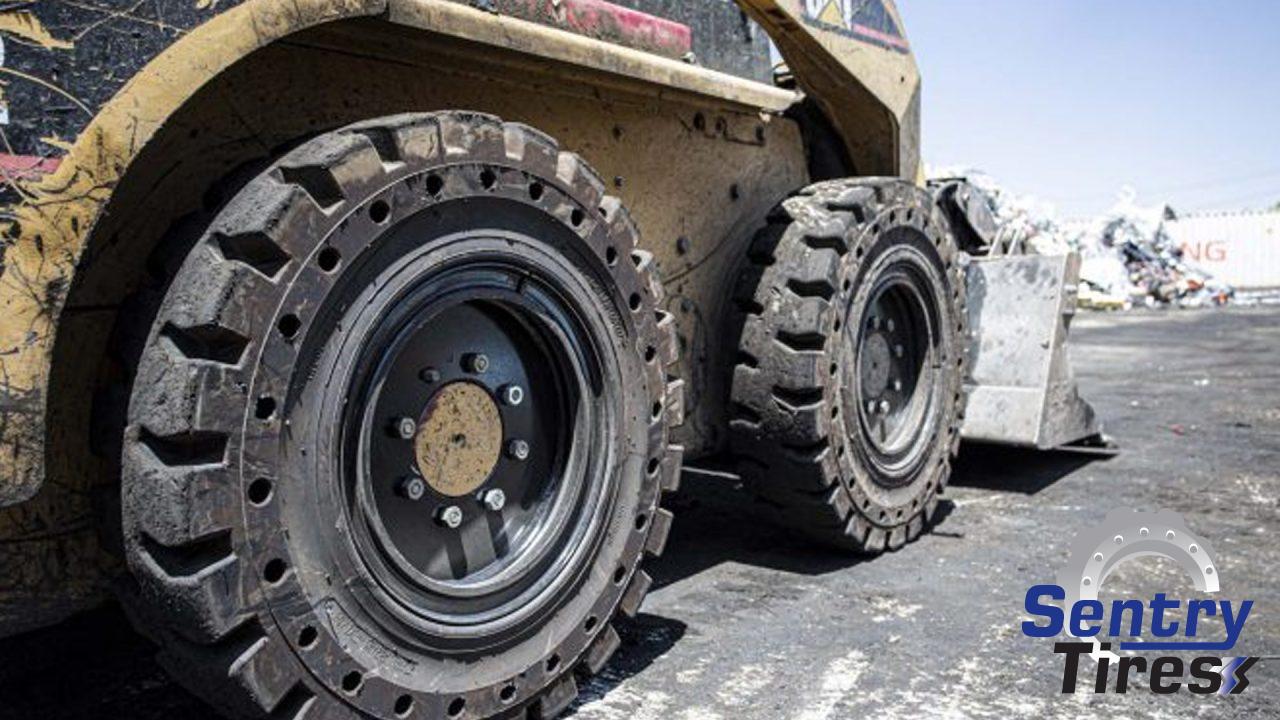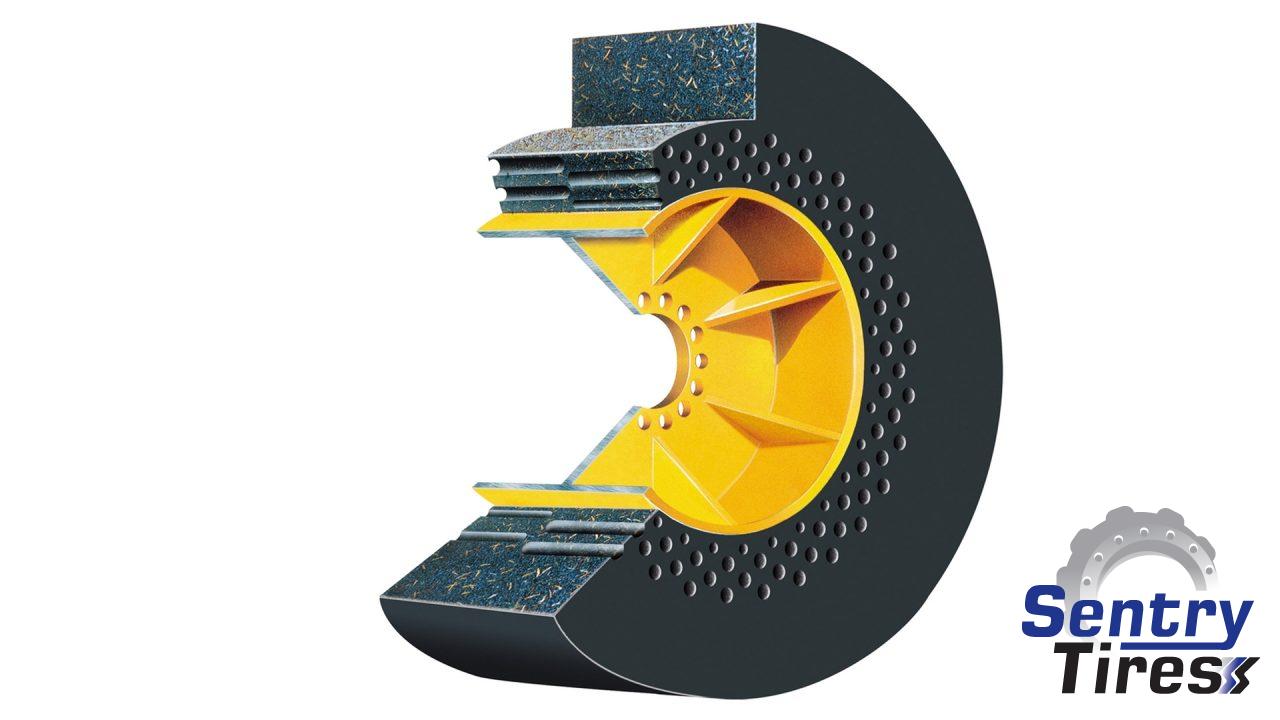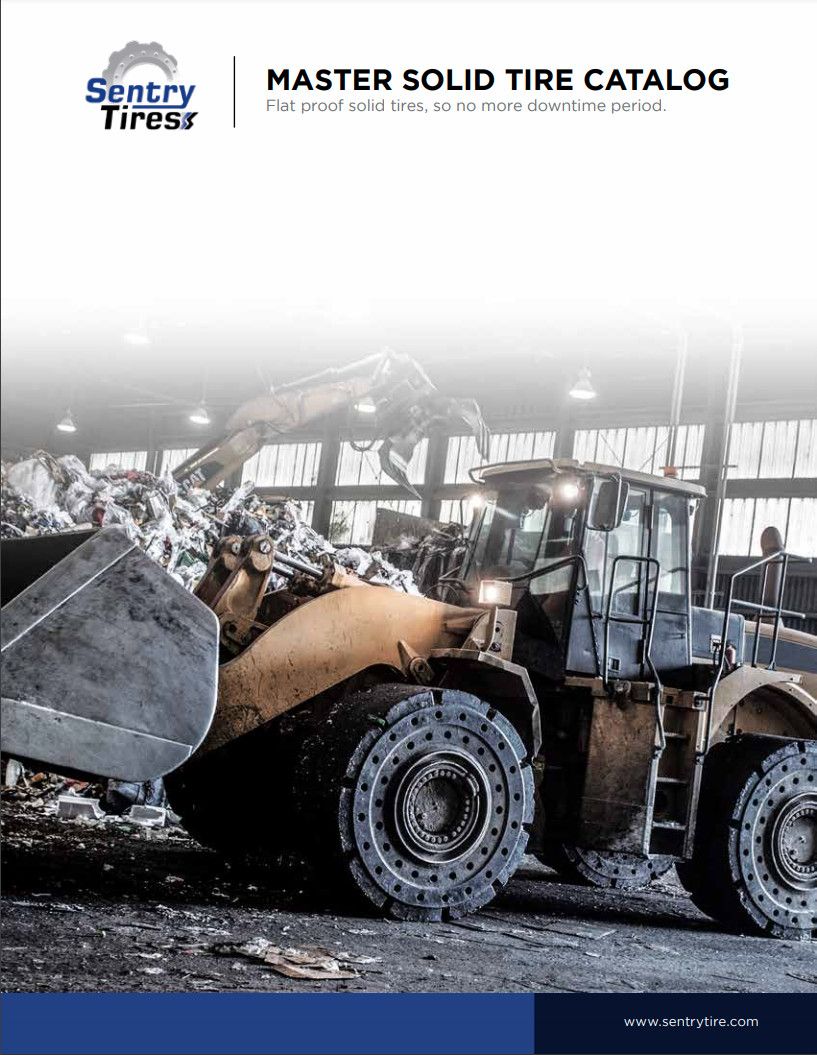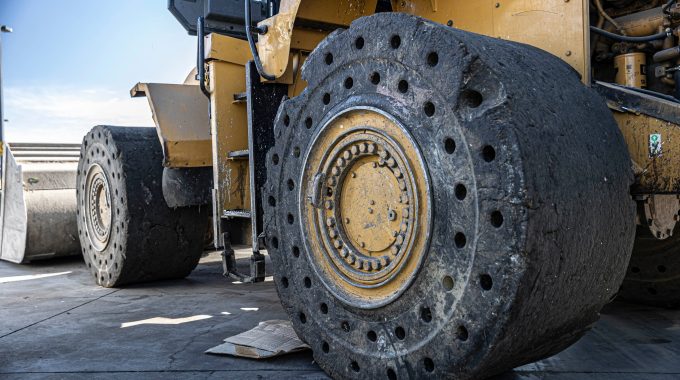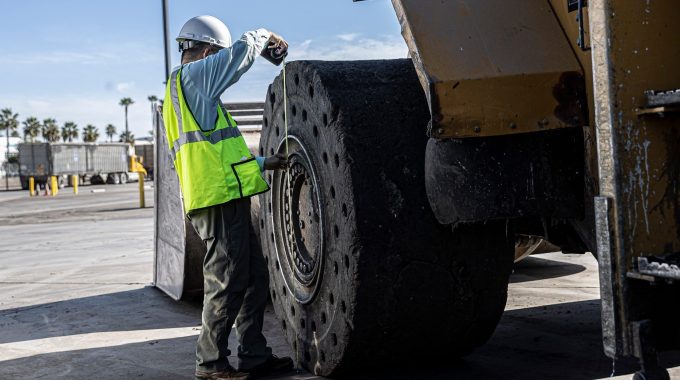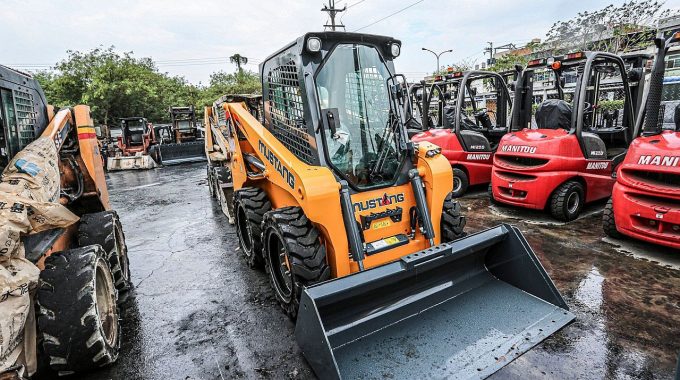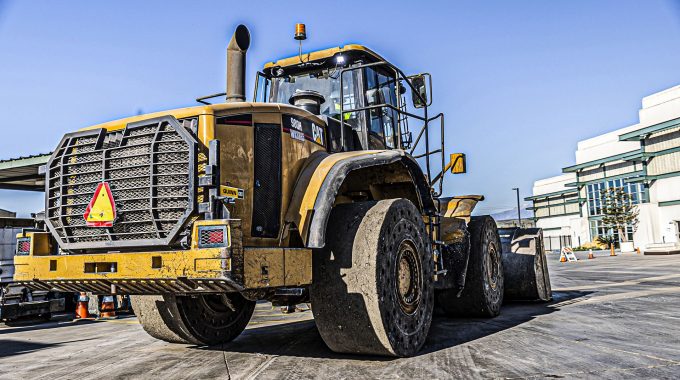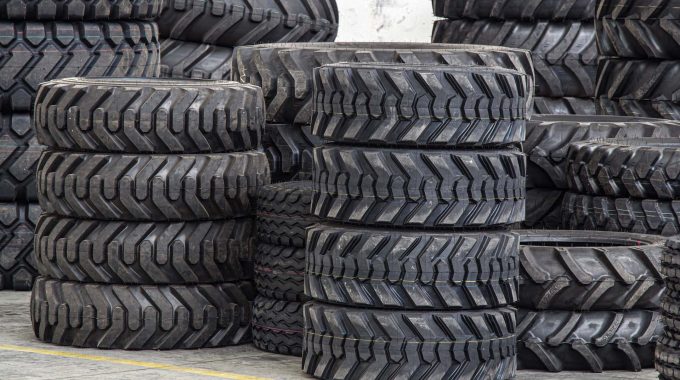
sentry tire
Solid OTR Loader Tires vs. Mold-On OTR Solid Tires
January 7, 2022
When selecting large OTR solid tires for your application, there are generally two types to choose from:
- Solid OTR Tires
- Mold-On Solid Tires
Solid OTR tires have 3 main advantages:
- They provide the same durability as mold-on tires, but they weigh much less, which means they use less energy and reduce wear and tear on your drivetrain.
- Solid OTR tires can be used on ORIGINAL OEM wheels, which is a major benefit if you need to switch between pneumatic tires and solid tires.
- Also, if you auction off your equipment at the end of its life cycle, you can get a better value since you would not have to reinvest in a set of wheels. On that same note, you can reuse your wheels after your tires wear out.
Mold-On tires are tires that have the wheel bonded to the rubber. Mold-On OTR Tires have some main pros and cons:
- Tires will generally be heavier because the rubber compound will be harder, ensuring a tight bond between the steel and rubber. The downside is that this will result in higher wear and tear on the drivetrain and fewer energy savings — Very important if you have carbon emission restrictions.
- All Solid OTR manufacturers have workmanship warranties that cover instances where the wheels spin on the tires. Wheel slippage on Mold-On solid tires is rare because the wheel and tires are bonded tightly together. However, the disadvantage of this design is you can not reuse the wheel when the rubber is worn. In addition, if you auction off your equipment at the end of its service life, you will have to invest in a new set of wheels which can be very expensive. You will also not have the option of using pneumatic tires if the equipment needs to be repurposed for lighter application use.
View our Solid Tire Catalog
Related Sentry News

